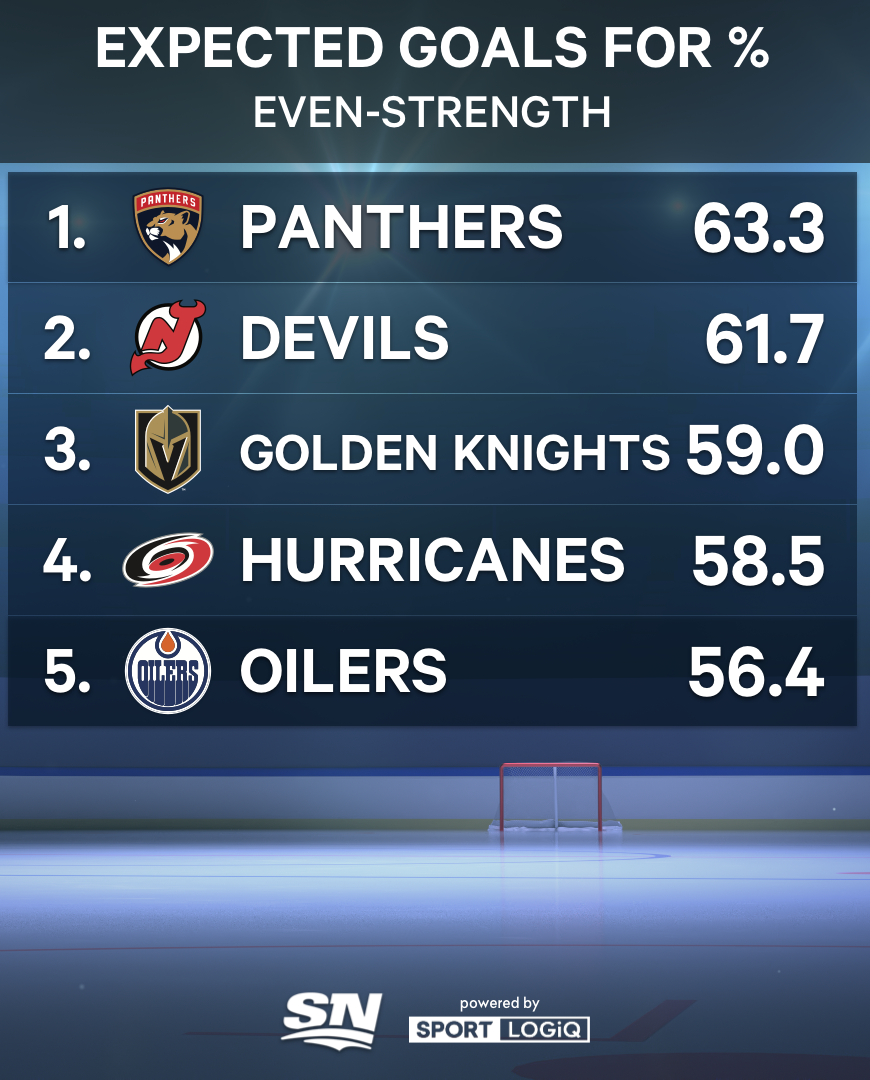The pitchforks were out in New Jersey.
Devils fans came to the team’s home opener on Oct. 15 eager to voice their displeasure with the on-ice product. They booed coach Lindy Ruff during pre-game introductions, then chanted “Fire Lindy” as the Devils fell to 0-2-0 to start the season.
What a difference a few weeks make.
The Devils are 9-1-0 since then, having won six consecutive games for the first time in more than 10 years and leading the Metropolitan Division. It had been even longer — December 1996 — since the Devils swept the Canucks, Oilers and Flames on the same road trip before doing so last week.
It begs the question: Are the Devils for real this time? They’ve seemingly been on the verge of breaking out for years, but haven’t made the playoffs since 2018. Based on their underlying metrics so far this season, though, the Devils could finally be reaching their potential.
In all situations, the Devils are outshooting their opponents by an average of 15.3 shots per game, the most in the NHL and four more than the next-closest team, Carolina (11.3).
The Devils have been especially dominant at even strength, controlling 61.7 per cent of expected goals. That isn’t far off from their 58.3 actual goal percentage in that situation, which suggests their process is sound.

A major component of the Devils’ success has been their quick-strike offence. New Jersey’s 7.6 scoring chances off the rush per game rank second in the league.
The Devils effectively use their speed to snuff out opposing rush chances as well, allowing a league-low 3.6 per game and denying a league-best 53.7 per cent of controlled entries against. You can’t score off the rush if you can’t make a play after gaining the blue line.
The Oilers learned a hard lesson last week about what happens when you give the Devils a sliver of space to attack the net with speed. Jesper Bratt’s game-winner was the Devils’ second goal in seven seconds, a franchise record.

Bratt, who opened the season with a team-record 11-game point streak, has been excellent, but Jack Hughes is the engine that drives the Devils. Only Connor McDavid (18.3) and Aleksander Barkov (17.0) average more offence-generating plays per game than Hughes (15.6).
Offence-generating plays are those that lead to a scoring chance. Hughes is particularly good at creating chances off offensive-zone carry-ins, ranking behind only McDavid in that regard.

The one thing that could hold back the Devils is their goaltending, which has been a weakness for the past few years. Their .894 team save percentage, tied for 22nd, is actually an improvement over last season’s league-worst .886 save percentage.
On Tuesday Ruff said MacKenzie Blackwood suffered a sprained MCL against the Oilers, which will sideline him for 3-to-6 weeks. It’s now up to Vitek Vanecek, who has allowed 1.3 goals above expected this season, to carry the load. The good news for the Devils is that veteran Jonathan Bernier has started practicing with the team after undergoing hip surgery in January.
The Devils don’t need their goaltenders to be elite. League average probably would suffice. If the Devils can get that, then they could make some serious noise in the Eastern Conference.
With data from Sportlogiq.






